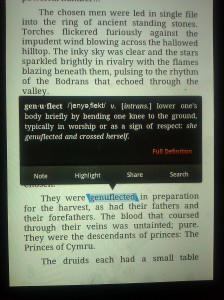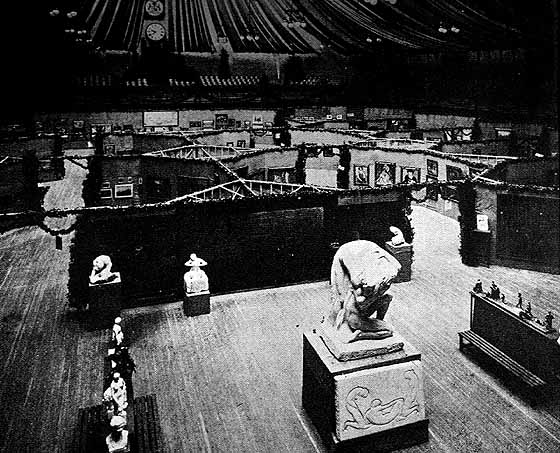Edward Gibbon, in his History of the Decline and Fall of the Roman Empire, summed up his many exhaustive volumes by diagnosing late-empire Rome with an illness of its civic virtue. Civis Romanus stopped caring about its place in society, about its responsibilities to the collective, says Gibbon, which contributed to and accelerated the empire’s collapse.
Every empire since has compared itself favorably to Rome, but in fairness every empire should also cautionarily compare itself. Every society and culture, in fact, should look for warnings from the past. We should be on guard for the same symptoms that Gibbon tells us brought on the Dark Ages.
Civic virtue was a founding virtue for the United States, but it’s one that has largely slipped away from us. Vast swaths of our society reject and refuse any responsibility to contribute, to get involved, even to inform themselves. Most eligible voters don’t vote. Startling percentages of us can’t name a single Supreme Court justice, or cabinet member, or leading legislator.
That’s a betrayal of our heritage, but it’s hardly new. Better men than me have complained about it at length. But what might be new, or at least evolving into new levels of intensity, are the challenges faced by that plucky minority who still embrace civic virtue. Because thanks to the shallowing of our culture, it’s harder than ever to engage meaningfully and purposefully, with a society so much more obsessed with style over substance.
Examples are myriad, but a couple became disgustingly apparent in recent weeks. Most recently—horrors—Senator Marco Rubio took a drink of water.
My initial reaction to this “story” was that it was surely going to be short lived. After all, I thought, let those among us without thirst cast the first…etc. etc. But it didn’t go away, did it? It became, according to Reuters, “the sip seen round the world.” CNN, meanwhile, asked if it was a “career-ender.”
thirst cast the first…etc. etc. But it didn’t go away, did it? It became, according to Reuters, “the sip seen round the world.” CNN, meanwhile, asked if it was a “career-ender.”
Clearly I underestimated our penchant for shallowness.
It breaks my heart to have to say this—and those among you who already agree are probably just as broken-hearted—but Rubio was giving a major political speech, in response to the major political speech. Words and policy positions are what mattered here. A sip of water? That is so damned meaningless and irrelevent that it makes my hair hurt to talk about it.
Another example is a bit less pivotal but probably just as symptomatic. The Super Bowl, my favorite sporting event, isn’t exactly  central to our society, but it’s become a cornerstone of our culture. It probably reflects a lot about us, and a lot of that is unflattering. So be it.
central to our society, but it’s become a cornerstone of our culture. It probably reflects a lot about us, and a lot of that is unflattering. So be it.
But once again, it would be great if we could embrace the substance of the event, and not the style. I’m dreaming though, aren’t I?
Halfway through last week’s epic game, Beyonce performed. I didn’t watch it, because half-time shows do nothing for me. But ever since, I’ve heard and seen, over and over, nothing except shocked critiques: Beyonce made funny faces.
The thing is, we could have a meaningful discussion about the worth of these half-time shows. Terry Pluto, sports writer for the Cleveland Plain Dealer, makes a powerful argument that the half-time show has become too sexualized, making the Super Bowl as a whole less appropriate for family viewing. I think he has a point. It’s probably worth discussing.
But because we embrace the shallow, it seems as though the only discussion we’re going to have in this regard is: Beyonce made funny faces.
What stings most in both these cases, other than that they demonstrate we’ve lost our ability for seriousness, is that there are also hints of double standards here. I detest double standards almost as much as I hate shallowness.
I’ve strummed a guitar from time to time. When I really get into it, I sometimes make a funny face. “Rock and roll face,” I’ve heard it called. Does it make me look anything like Beyonce? I have no idea – because it has never mattered. Not one bit.
Indeed, that fabled rock and roll face is part of our cultural landscape. It’s expected—at least when it’s a man onstage. When Mick Jagger sings Jumpin Jack Flash, the only thing that’d make us notice his expression is if he isn’t making rock and roll face.
Jagger sings Jumpin Jack Flash, the only thing that’d make us notice his expression is if he isn’t making rock and roll face.
Similarly, can we honestly say that there’s anything momentous or remarkable about a public speaker going a bit dry, and doing something about it? If not, why is Marco Rubio being singled out  for this?
for this?
For the record, I’m no fan of Marco Rubio. I agree with very few of his positions. But, out of what I hope is an abundance of civic virtue, I’m willing to listen to him. I’m willing to honor and respect his right to present his and his party’s argument.
But that civic virtue, that simple human respect, becomes harder and harder to exercise. It’s squeezed out by shallowness, by the valuation of style over substance, and by our habitual, self-destructive embrace of double standards.
How self destructive? Not for me to say. But some future Gibbon, I fear, might mark down these trends as woeful symptoms of a regrettable, preventable decline.
Shout out, btw, to my kin and debate partner,
Kevin Carpenter, whose observations about
the Rubio double standard inspired this post.
 I’ll start with a defensive-sounding disclaimer: I love me some books. I love me some old school books. By way of evidence (also somewhat defensively) I offer this snap of my recent haul. Long story, but most of these books were headed for the dumpster. Now they’re mine. I stand over hauls like this and rub my hands together, greedily.
I’ll start with a defensive-sounding disclaimer: I love me some books. I love me some old school books. By way of evidence (also somewhat defensively) I offer this snap of my recent haul. Long story, but most of these books were headed for the dumpster. Now they’re mine. I stand over hauls like this and rub my hands together, greedily. these the ancients. They’re no one’s idea of an antiquarian treasure trove, but I treasure them nonetheless. No, I haven’t read them all (some of them are delicate enough that I dasn’t read them). Some of them are also rescues. I won’t pretend I rescue any book for altruistic purposes. I get them, keep them, chortle and obsess over them, because I like having them around.
these the ancients. They’re no one’s idea of an antiquarian treasure trove, but I treasure them nonetheless. No, I haven’t read them all (some of them are delicate enough that I dasn’t read them). Some of them are also rescues. I won’t pretend I rescue any book for altruistic purposes. I get them, keep them, chortle and obsess over them, because I like having them around. Okay, one more. This is certainly one of my lesser-stocked shelves, alas. Still one of my favorites. My example of what the incomparable
Okay, one more. This is certainly one of my lesser-stocked shelves, alas. Still one of my favorites. My example of what the incomparable 
 “I’ve always had a knack and penchant for going toward humorous irony.” That’s what celebrated Seattle artist Charles Krafft told Salon in a 2002 interview.
“I’ve always had a knack and penchant for going toward humorous irony.” That’s what celebrated Seattle artist Charles Krafft told Salon in a 2002 interview. The largely liberal West Coast art establishment ate it up, agreeing in unison that it was all ironic, that Krafft was using his craft to pan fascism.
The largely liberal West Coast art establishment ate it up, agreeing in unison that it was all ironic, that Krafft was using his craft to pan fascism. Krafft’s ideology seems to have evolved over time, culminating today in Holocaust-denial (or at least Holocaust minimizing), and an active presence on far-right Internet forums and podcasts. In fact, Graves says, it was just a couple simple Google searches that presaged her glimpse into Krafft’s character. He’d made no effort to hide his identity during these affiliations. One of Graves’s first finds was a podcast archived on the white nationalist website, The White Network, in which Krafft participated in a debate as to whether well-known racists should keep their darkest feelings secret. The group decided they should not.
Krafft’s ideology seems to have evolved over time, culminating today in Holocaust-denial (or at least Holocaust minimizing), and an active presence on far-right Internet forums and podcasts. In fact, Graves says, it was just a couple simple Google searches that presaged her glimpse into Krafft’s character. He’d made no effort to hide his identity during these affiliations. One of Graves’s first finds was a podcast archived on the white nationalist website, The White Network, in which Krafft participated in a debate as to whether well-known racists should keep their darkest feelings secret. The group decided they should not.

 emperors, and more than one Muslim caliph did it to hobble the intelligentsia and to condition future slaves. Not a few regimes have done it because they deem an educated populace ungovernable. It’s been done to eliminate perceived blasphemies, to hide inconvenient historical truths, to sway contemporary opinions by annulling collective memory.
emperors, and more than one Muslim caliph did it to hobble the intelligentsia and to condition future slaves. Not a few regimes have done it because they deem an educated populace ungovernable. It’s been done to eliminate perceived blasphemies, to hide inconvenient historical truths, to sway contemporary opinions by annulling collective memory. Their procrastination, or whatever it was, allowed a few very brave librarians and curators spirit away the cream of the institute’s ancient collection–at least 28,000 manuscripts and documents, some more than a thousand years old.
Their procrastination, or whatever it was, allowed a few very brave librarians and curators spirit away the cream of the institute’s ancient collection–at least 28,000 manuscripts and documents, some more than a thousand years old. biblioclasts are doing to us.
biblioclasts are doing to us. When the most dire things happen to us, when they happen to us personally or collectively, our first instinct is to wish nothing so horrible should happen again. The second is to prepare for it to happen again.
When the most dire things happen to us, when they happen to us personally or collectively, our first instinct is to wish nothing so horrible should happen again. The second is to prepare for it to happen again. tethers; and reconnect, if only for a while, with a simpler life.
tethers; and reconnect, if only for a while, with a simpler life.
 That high-water mark was achieved almost exactly a century ago, with the February 17-March 15, 1913 International Exhibition of Modern Art at the 69th Regiment Armory on Lexington Avenue in New York City.
That high-water mark was achieved almost exactly a century ago, with the February 17-March 15, 1913 International Exhibition of Modern Art at the 69th Regiment Armory on Lexington Avenue in New York City. Chicago and Boston.
Chicago and Boston. thirst cast the first…etc. etc. But it didn’t go away, did it? It became, according to
thirst cast the first…etc. etc. But it didn’t go away, did it? It became, according to  central to our society, but it’s become a cornerstone of our culture. It probably reflects a lot about us, and a lot of that is unflattering. So be it.
central to our society, but it’s become a cornerstone of our culture. It probably reflects a lot about us, and a lot of that is unflattering. So be it. Jagger sings Jumpin Jack Flash, the only thing that’d make us notice his expression is if he isn’t making rock and roll face.
Jagger sings Jumpin Jack Flash, the only thing that’d make us notice his expression is if he isn’t making rock and roll face. for this?
for this?


 helped create the famous
helped create the famous  journalism, media, and the arts. (Originating, I’m proud to say, from
journalism, media, and the arts. (Originating, I’m proud to say, from 

 We learned this week that we have another look at the face of history’s most talented composer. This undated 18th-century portrait
We learned this week that we have another look at the face of history’s most talented composer. This undated 18th-century portrait  I dreamed
I dreamed  The first was
The first was  his teenage sons will probably never go to the movies with him again.
his teenage sons will probably never go to the movies with him again.